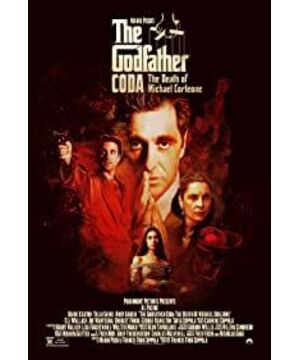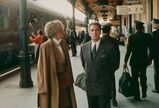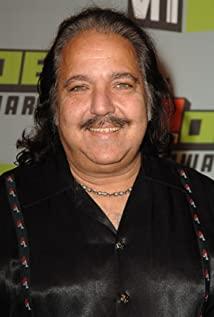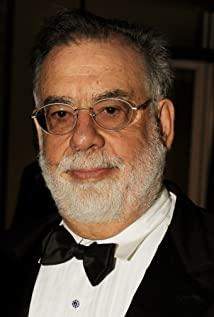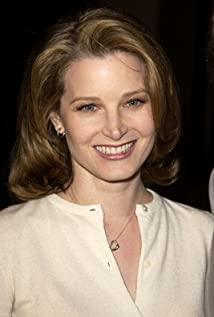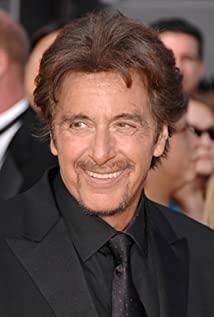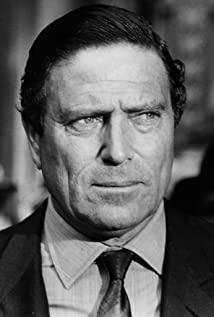In 1974, "The Godfather" (sequel) came out, and after 16 years, "The Godfather" (third episode) finally met with the audience. This huge production cost of up to 54 million U.S. dollars is the third and final part of the "Godfather Series". This Mafia-themed series records the American Dream and the rise and fall of the Mafia family spirit. It is the longest (nearly 10 hours) and most successful (the gross box office revenue of the first two episodes has exceeded 700 million U.S. dollars) to date. Gangster movie. The "Godfather" series is different from the past gangster movies. It not only shows the bloodthirsty and ruthlessness of the underworld, but also emphasizes the warmth of the godfather towards family relatives. It combines the gang rules of the mafia family to kill each other and exist in The traditional concept of loyalty in the Italian-American family has created a brand-new genre of gangster movies that has become popular for a while.
The narrative structure of the third episode still follows the basic pattern of "one family with two levels" in the first two episodes, but is slightly different. Michael's sister, Connie, belongs to the outer class, but intervenes in the inner affairs of men, and supports Vincent (illegitimate son, Michael's nephew, Connie's godson), who later became Michael's successor, to take violent actions. However, on the whole, this is just a foil and cannot change the basic pattern of the above narrative structure. From the narrative content of the third episode, it is obviously different from the previous two episodes. The first two episodes mainly focused on the criminal activities of the Mafia, and there was not much exposure to the corruption of political and police officials. The third episode focuses on the Corleone family’s efforts to legalize wealth and the resulting profound exposure of the church, politicians, and other Mafia families to collude and engage in criminal activities. It can also be said that this episode depicts a two-way transformation: the black hand. The party tried to shift from illegal to legal (of course only the Corleone family), while the Holy See and politicians turned from legal to illegal (carrying out illegal activities under the cover of legality).
As a kind of audiovisual art, as far as time and space are concerned, the narrative structure of film can be roughly divided into a sequential structure of time and space (such as "The Godfather") and a structure of interlaced time and space (such as "The Godfather Sequel"). Except for a few flashback shots, the third episode mainly uses a time-space sequential structure. When Coppola was shooting the sequel, he treated the first episode as an integral part of the structural factor. When he was shooting the third episode, he obviously considered the first episode and the sequel as part of the structural factors.
The prologue of the third episode is a 1 minute and 45 second panning shot. As the camera slowly pans, the following pictures appear in sequence: the abandoned Michael's dilapidated luxury mansion in Nevada; row upon row of high-rise buildings in New York City; The cheerful family photos of Michael when he was young; the photo of Michael’s sons and daughters Anthony and Mary; the scene of old Michael writing letters to his children at his desk. The camera cuts to the honour ceremony for old Michael in the church hall. This horizontally shifting lens makes the picture extend to both sides reasonably, the composition of the picture is constantly changing, the scene and the characters appear alternately, and they are organically interwoven into a whole in the non-stop flow. This slow subjective shot is both lyrical and nostalgic, vividly depicting the thoughts that emerged from the old Michael's mind and the nostalgia for his loved ones. Accompanied by this panning scene is a cordial and heavy narration: "Dear children, since I moved to New York for more than seven years, I have not seen it frequently. I am worried about it. I hope you will come to watch the ceremony. I am honored for participating in charity The Holy See awards the Medal of Honor. Only children are treasures in the world, and children are better than money and power. You are my treasure. Anthony and Mary: Although I let your mother be responsible for raising, I still look forward to meeting with you and living in harmony with you. You Maybe it can persuade my mother to come and watch the ceremony with her, and share the joy of family relationship. Father's word. "Narration is an important way of expressing narration and lyricism in the film. This narration in the form of a family letter closely cooperates with the picture and becomes an indispensable part of the film. It not only expresses the old Michael’s nostalgia for his children, but also acts as a link between the previous and the next and the structure of the film together with the horizontal lens. Role: Continuation-At the end of the sequel, the young Michael sat alone outside the door of his luxurious mansion in Nevada, looking into the distance; Beginning-Michael moved from Nevada to New York for more than seven years, and the elderly Michael used the honor Opportunity, to summon the children to New York, the narrative of the third episode begins.
The church honour ceremony lasted 5 minutes, confessing the close relationship between Michael and the Holy See. In the course of the award ceremony, Michael thought about it. One of the flashback shots was a panoramic shot used at the end of the sequel: Michael stared into the distance alone in front of the huge living room window of his luxurious Nevada mansion. The loneliness at that time and the editing of honor at this time together allow the audience to peek into Michael's thoughts; the realization of family reunion let us notice a smile across Michael's face through close-up shots, expressing inner satisfaction. The appearance of his ex-wife Kay certainly made Michael feel gratified, and Kay's presence with the current husband for the ceremony stimulated Michael's feelings. This subtle change in facial expression was also shown through close-up shots.
The celebration after the award ceremony was held at Michael's New York mansion. This 25-minute celebration segment is similar to the camera processing at the beginning of the first episode. Coppola will deal with family affairs in the interior room and the joyous celebration scene in the lobby. Cross-edited together to form a main narrative paragraph in the third episode.
This narrative paragraph explains the following important plots:
1. Michael and his ex-wife Kay had a heated debate in the interior about the future of their son Anthony. Coppola used a set of front and back close-up shots here, with Michael in the center, Kay on the left and Anthony on the right, and the three argued. Kay supports his son's choice to be a musician, and Michael insists that he be a family lawyer. In the film, in order to emphasize the facial expressions and physical movements of the characters, close-up shots are often used. If the close-up focuses on the detailed description, then the close-up is like a portrait description. Coppola's use of a close-up lens here is very appropriate, because through close-up, we can clearly see the changes in the speaker's facial expressions and emotions. After Anthony left the interior, the director used several mid-range and panoramic shots as transitions. Then he used a set of close-up shots to show that Michael and Kay continued to argue, until Michael agreed to let Anthony go his own way, and Kay left. Disappointed, Michael sat down in an armchair dejectedly. This armchair symbolizing the power of the Corleone family appeared at the beginning of the sequel. This narrative mainly illustrates two points: 1. The further deepening of contradictions within the family; 2. Michael's hope of letting his son inherit his own business fell through.
2. Altobello called on Michael in the interior. He said that he had forgotten his hatred and had no desire. To prove his friendly feelings for the Corleone family, he filled out a million-dollar check on the spot and donated it to the "Corleone Foundation". Coppola uses a slightly longer mid-range view distance to deepen the depth of the picture, which is convenient for expressing the characteristics of a certain environment and atmosphere. Here, the mid-range lens is mainly used to render the peaceful and friendly atmosphere when the two meet. Coppola set up an illusion here and laid the groundwork for it. Later narratives show that behind the peaceful and friendly is full of murderous intent, and behind the forgetting of hatred is full of hatred.
3. Michael tries to mediate the contradiction between Joey and Vincent. As one of Michael's assistants, Joey had a sharp conflict with Michael's nephew Vincent. Vincent quarreled fiercely with Joey with the support of his godmother Connie, and refused to give in to each other, so that Michael's mediation failed. This failure shows at least two points: 1. Michael's prestige in the family is declining; 2. The intensification of the contradiction between Joey and Vincent heralds the escalation of the murder within the gang. The director mainly used the middle shot and the panoramic view when shooting this scene, the purpose is to fully show the characters' entire actions and relationships, and to render the tense atmosphere.
4. Take a "family portrait" photo in the joyful atmosphere of the lobby. Michael returned to the hall from the inner room, and returned to the joy from the contradictions. This atmosphere is the best time to take a "family portrait". Michael deliberately included Vincentra in the "Family Portrait". This move made it clear that even though Vincent was an illegitimate child, Michael still regarded him as a member of the family, and it foreshadows that Vincent will soon become Michael's career heir. This arrangement is not accidental. It is very similar to the scene of the "family portrait" taken at the Connie's wedding ceremony in the first episode: When the whole family stood ready to take a group photo, the godfather Widow (Michael's father) found that Michael had not arrived and said : "I won't take pictures without Michael." The "family portrait" was not taken until Michael joined in. Soon, Michael inherited his father's business and became the godfather.
The passage of the church meeting shows Michael's determination to abandon illegal trading and enter a legal enterprise. A close-up showed the majesty of the church before the audience, but under the cover of the sacred cloak, the talks in the church gave the mafia the opportunity to transfer hundreds of millions of dollars of illegal income to legal investment channels, making the church an ideal for money laundering. place. Jill Deming knows that the Corleone family's money is not coming from the right path, and still asks Michael to help him through the difficulties. In exchange, the Corleone family wiped out the family's criminal history with the Enmbila Company, which controls $6 billion in assets. This dirty deal between the Holy See and the largest Mafia family fully exposed the corruption and incompetence of the Holy See. Coppola still uses a set of front and back close-up shots and close-up shots so that the audience can see the facial expressions of the two bargaining at a glance.
Gang infighting leading to helicopter slaughter scenes are rare in gangster movies. Due to the uneven distribution of the spoils, Joey departed in a rage, followed by a helicopter massacre. This slaughter scene with strong visual effects lasted 1 minute and 20 seconds. The dividend-paying casino shareholders are sitting at the table talking. Then came a slow advancing shot, pushing it into close-up and close-up. At the same time, the rumbling sound of the helicopter was loud. We saw the cups and plates on the table vibrating, the apples rolling, and the ceiling chandeliers vibrating. Everyone had a premonition that the situation was not good, and they split up and fled for their lives. However, the door has been locked and there is no way to escape. At this time, rows of machine gun bullets were fired from the helicopter, and each shareholder fell into a pool of blood. The sound of machine gun shooting, people shouting and the sound of running away from the road were intertwined, and the atmosphere was terrifying, and it felt like the end of the world was coming. In the chaos, Michael opened the door with a rifle under the cover of Vincent and fled the scene. This plot arrangement is similar to the first episode of Michael saving his father from the hospital, and indicates that Vincent will become Michael's successor. Coppola uses the unique artistic method of combining film sound and picture to give the audience a sense of immersiveness and the horror of witnessing gangs killing each other. Obviously, this passage is a wonderful passage carefully arranged and produced by director Coppola.
The Sicilian part is as long as 1 hour and 15 minutes, accounting for almost one-half of the film's time. When the Michael family arrived in Sicily, they were warmly welcomed by the villagers. This part focuses on Michael’s warmth and care for his relatives (such as children, nephews, younger sisters, and even ex-wife), and at the same time depicts the conflicts between rival groups with conflicts of interest (one is led by Lucesi, and the other is led by Michael). Mutual vendettas resulted in a tragic ending in which both sides suffered. Among them, the theater murder section is a total contest between two rival groups.
This paragraph is 27 minutes long and is structured in a sub-narrative method, which is a parallel montage. Michael's mortal enemy Lucesi is the financial and political magnates, and the backstage of the Mafia leaders Joey and Altobello. Gilday is also under his command. Michael is a thorn in their eyes and a thorn in their flesh. In order to thwart the conspiracy of Lucchesi and his gang, Michael sent Vincent into them, obtained accurate information, and then worked out an action plan to eliminate the enemy, and chose to stage "Country Samurai" in the Palermo Theater. Performed that night. The criminal group headed by Lucesi also took action at the same time. In this way, the development of the situation proceeded in parallel along the three threads. One is that the theater is performing an opera starring Michael’s son Anthony, and Michael leads his family to watch in the theater box; the second is Vincent’s commander who killed Lucesi, Gilday, and Altobello one by one under the cover of the performance. ; Third, while Michael’s enemies cleverly poisoned the new pope, they also sent assassins to take advantage of the opportunity to assassinate Michael. Here, the parallel montage staggered the narratives of murders that occurred in different locations at the same time, quickly pushing the whole film to a climax, and the fast pace at this time was in sharp contrast with the slowness before. The opposition between the civilized and elegant opera performances and the brutal and bloody gang fire further deepens the theme.
Michael, who was once in the underworld and “made meritorious service” and was in a state of affairs for a while, he finally found it when he was old, and he developed a sense of atonement. He is close to the Holy See, wants to do good to make up for it, and even more wants to wash his hands and get out, to break with the underworld. However, the tree wanted to be quiet and the wind continued, and the other families of the Mafia put it to death again and again, making him unable to stop, so he had to merge. And this fire is not equivalent to declaring to him that taking the right path is "this way is nowhere"!
At the end of the film, a close-up shot of the head was used, and we saw Michael being very old and sad. Then there is a big panorama. Michael only occupies a small part of the lower left corner of the screen. He sits in a chair and slowly falls to the ground, dying lonely, with no relatives or friends, only a puppy to accompany him. This arrangement of Coppola has symbolic significance: Although Michael was once prominent in the underworld, he died in obscurity and desolation. Perhaps Coppola used this metaphorical way to announce to the world that the Godfather series has come to an end.
View more about The Godfather: Part III reviews


